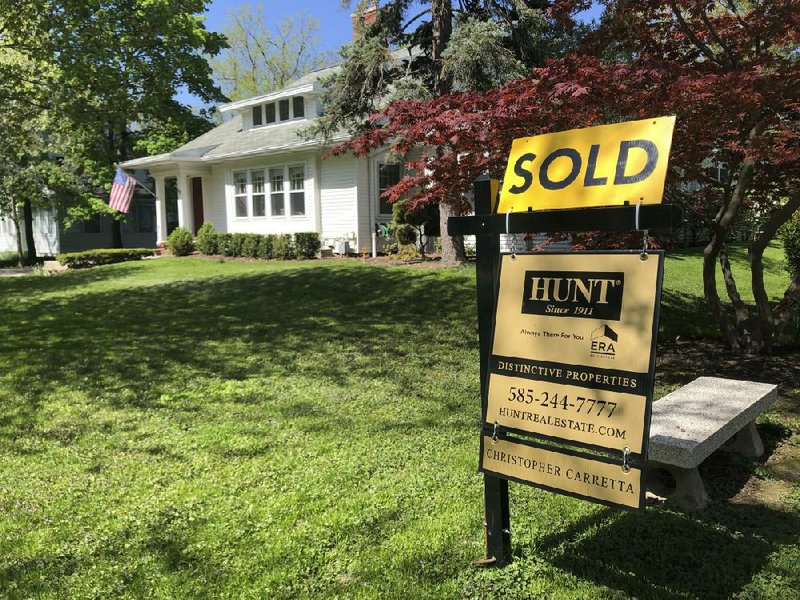New-home sales in the U.S. unexpectedly increased in April after plummeting a month earlier, suggesting the housing market is starting to stabilize. The Commerce Department reported Tuesday that sales of new single-family homes rose 0.6% to a seasonally adjusted annual rate of 623,000 last month. This followed a decline of 13.7% in March as businesses and schools were closed in an effort to contain the virus. Over the past 12 months, sales are down 6.2%.
The median price for a new home sold last month was $309,900, dropping 8.6% from a year ago. Prices appeared to dip because fewer homes sold last month in the range of $300,000 to $399,999 and the range of $750,000 and above.
Covid-19 disrupted what appeared to be signs of growth in the housing market as low mortgage rates attracted buyers. Stuck in social isolation, they chose last month to purchase homes that have yet to be constructed -- a category that surged 26.5% from March and accounted for all of the sales growth in April. Sales of homes already under construction fell slightly, while sales those already completed declined 13.6% from a year ago.
[CORONAVIRUS: Click here for our complete coverage » arkansasonline.com/coronavirus]
Three of four U.S. regions showed stronger home sales in April than a month earlier, reflecting 2.4% gains in the South and Midwest, the Commerce Department's report showed. Purchases climbed 8.7% in the Northeast and dropped 6.3% in the West.
Mortgage rates near historic lows may be putting a floor under the housing market. And even as soaring unemployment and tighter credit standards threaten to complicate the recovery, home building is proving to be a bright spot. Builders have been helped by local governments, which in many cases have deemed the industry essential and allowed work to continue.
Realtor.com senior economist George Ratiu suggested that the shelter-in-place orders might have encouraged more people to search for homes to meet their needs in a post-coronavirus economy.
"[T]hey discovered the value of additional space and updated kitchens," he said. "As remote work policies are being extended into 2021 by a growing number of companies, and likely to become permanent in some cases, demand for home offices is projected to grow. If home builders can respond to these shifting preferences, sales of new homes may see a swifter rebound in the months ahead."
The report boosted the stocks of home builders, which have rebounded in recent weeks. An index tracking the industry had jumped 19% in May through Friday, beating the gain in the S&P 500.
Job losses are primarily hitting renters who are more likely to be working in lower-paying service and hospitality jobs that were damaged most by social-distancing rules, said Mark Vitner, senior economist at Wells Fargo.
Unlike the existing home market, which has seen a big drop in inventory, builders were able to accommodate buyers, showing floor plans virtually and even offering drive-through closings.
"If the reopenings continue, housing may provide an upside surprise to the economy this year," Vitner said.
While housing is holding up better than expected, the recovery will depend on how quickly the rest of the economy bounces back.
"We're still trying to understand what is the new normal," said Alex Barron, an analyst with the Housing Research Center in El Paso, Texas.
The government report has a high margin of error, so the April figures could be revised in the coming months.
Information for this article was contributed by Josh Boak of The Associated Press and by Prashant Gopal of Bloomberg News.
Business on 05/27/2020
